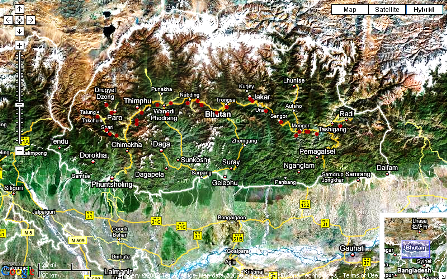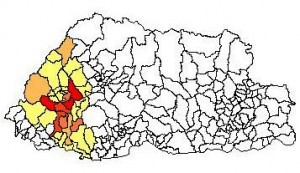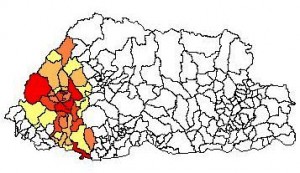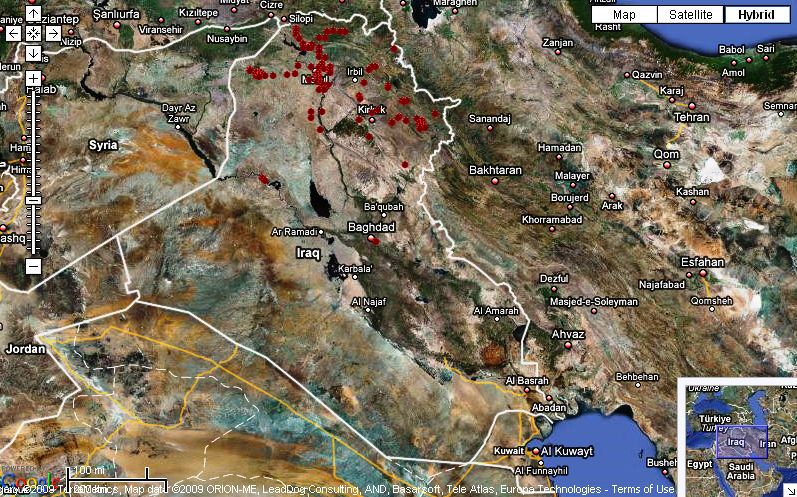Yes, that’s what the news item said, and it got me all excited. So I rushed off to SINGER first to see if there’s any germplasm from that country in the international collections, and if any of that was geo-referenced. And I was happy to find some 30 barleys at ICARDA, strung all along the main road, from east to west.
And so then I went off to CountrySTAT-Bhutan to see how well this material covered the distribution of the crop. The results were a little weird. This is the distribution of barley cultivation in Bhutan in 2005.
As you can see, the crop is concentrated in the west of the country, whereas in 1981, when the ICARDA collection was made, that seemed not to be the case. Ok, things change. The oldest data in CountrySTAT-Bhutan is 1999, but the pattern is the same.
Has the distribution of barley in Bhutan really changed so drastically in the past 30 years or so? And if so, what has that done to genetic diversity? Have the landraces formerly found in the east migrated, or are they only to be found in genebanks now?



